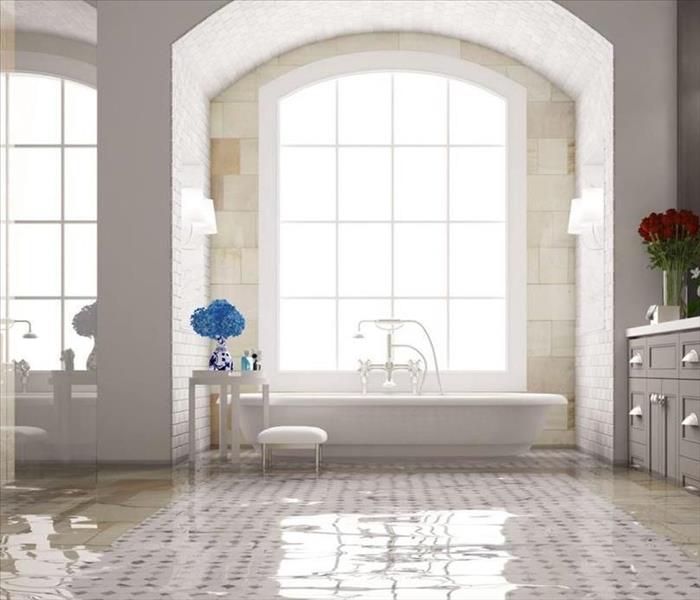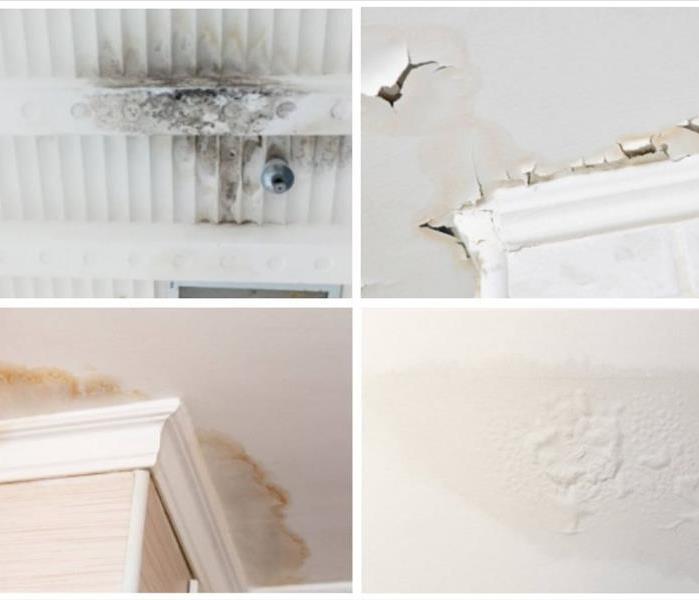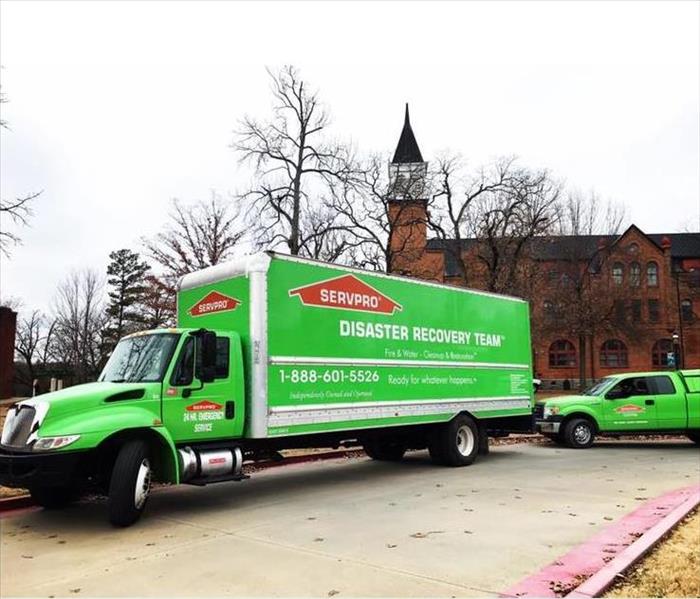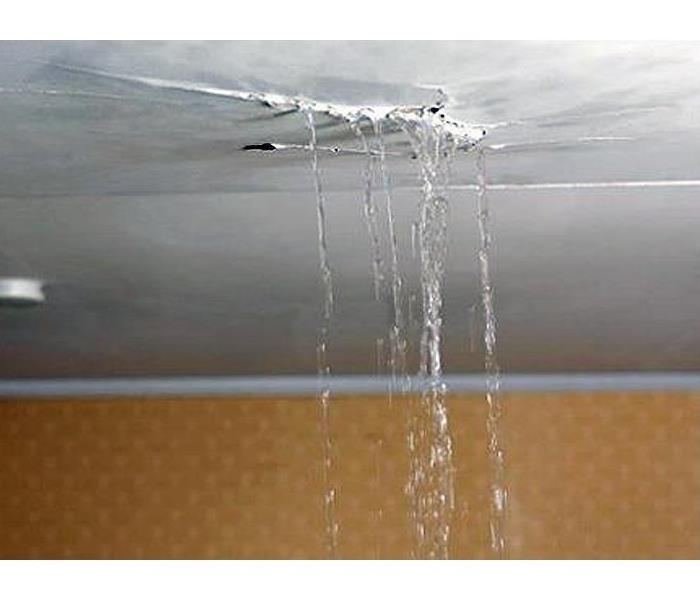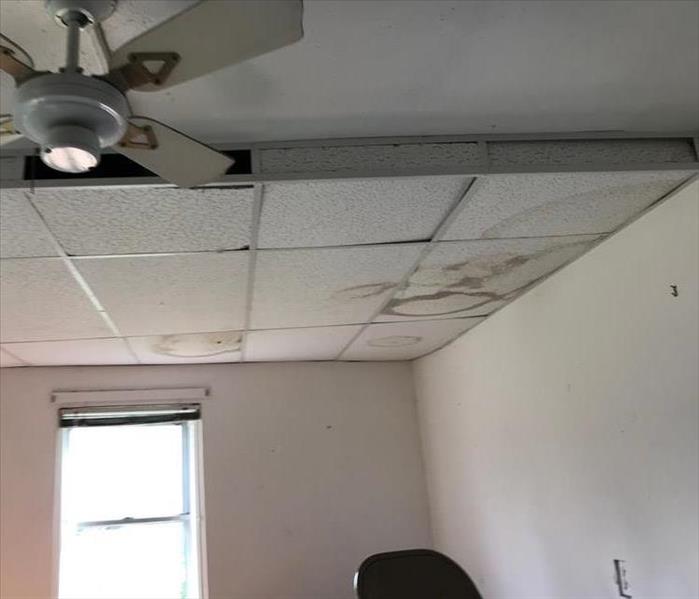Archived Water Damage Blog Posts
Water Damage Restoration: Essential Tips for Muskogee Homeowners
8/5/2024 (Permalink)
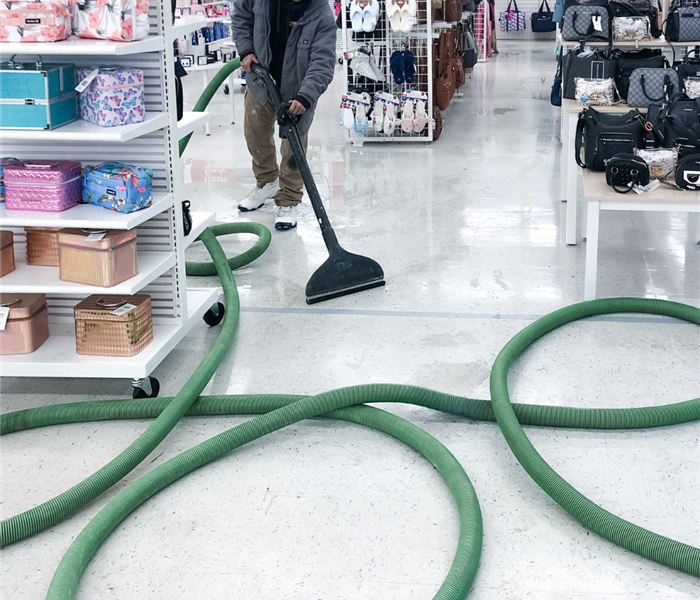 SERVPRO of Muskogee/McIntosh Counties & Tahlequah offers 24/7 water damage restoration services.
SERVPRO of Muskogee/McIntosh Counties & Tahlequah offers 24/7 water damage restoration services.
Water damage can strike at any time, causing significant stress and disruption to your home or business. At SERVPRO of Muskogee/McIntosh Counties & Tahlequah, we understand the urgency and importance of addressing water damage promptly. Here are some essential tips for homeowners to help mitigate water damage and ensure a swift restoration process.
Immediate Steps to Take When Water Damage Occurs:
Ensure Safety First:
- If it’s safe to do so, turn off the water source to prevent further flooding.
- Avoid electrical hazards by turning off the power in affected areas.
- Keep children and pets away from the affected area.
Remove Excess Water:
- Use mops and towels to remove as much standing water as possible.
- If you have access to a wet/dry vacuum, use it to extract water from carpets and floors.
Protect Valuables:
- Move valuable items, such as electronics, documents, and photographs, to a dry area.
- Place aluminum foil or wooden blocks under furniture legs to prevent further water damage.
Ventilate the Area:
- Open windows and doors to promote air circulation and drying.
- Use fans and dehumidifiers to help reduce moisture levels.
When to Call the Professionals:
While immediate actions can help mitigate some damage, it’s crucial to call the professionals at SERVPRO of Muskogee/McIntosh Counties & Tahlequah for thorough water damage restoration. Our team is available 24/7 to provide expert assistance and ensure your property is restored quickly and efficiently.
Need Emergency Service? Call Us 24/7 – 888-601-5526
Our Water Damage Restoration Process:
Inspection and Assessment:
- We conduct a detailed inspection to determine the extent of the water damage and develop a comprehensive restoration plan.
Water Removal:
- Using advanced equipment, we extract all standing water from your property to prevent further damage.
Drying and Dehumidification:
- Our team uses industrial-grade dehumidifiers and high-speed air movers to dry affected areas thoroughly.
Cleaning and Sanitizing:
- We clean and sanitize all salvageable items and surfaces to ensure your property is safe and healthy.
Restoration:
- We repair and restore your property to its pre-damage condition, making it "Like it never even happened."
Why Choose SERVPRO®?
- We are a preferred vendor for many national insurance companies.
- We bill the insurance directly, so you have one less thing to worry about.
- Our technicians are highly trained in water damage restoration techniques.
- We use advanced inspection and extraction equipment.
By following these steps and contacting SERVPRO of Muskogee/McIntosh Counties & Tahlequah, you can ensure a swift and efficient restoration process. Our team is dedicated to providing top-notch service and helping you get back to normal as quickly as possible.
For more tips and updates, visit our website or follow us on Facebook. Stay safe and prepared!
Large Format Drying Equipment
7/19/2023 (Permalink)
When a water line breaks in your home or business, it's only a matter of seconds before the water starts causing serious damage. Once SERVPRO of Muskogee/McIntosh Counties & Tahlequah removes the excess water, the floors and walls may appear dry, a quick inspection will reveal they are wet to the touch. Our Professionals will use room measurements, temperature, and relative humidity to determine the optimal number of air movers and dehumidifiers to dry your property. We’ll carefully monitor the progress using moisture meters until the materials return to acceptable drying goals. Professional and Industrial-grade dehumidifiers are used and help prevent secondary water damage like swelling and warping of floors, walls, and furniture. High-speed air movers are also utilized to create airflow across walls, carpets, pads, and furniture, which accelerates the evaporation of moisture.
Need Emergency Service?
Call Us 24/7
918-913-4490
We're always "Here to Help"
How Safe Is It to Handle Each Type of Contaminated Water?
7/7/2022 (Permalink)
Types of Contaminated Water
Contaminated water can take many different forms. Some homes will experience a flood of predominantly clean other while other abodes have to contend with black water. No matter what type of water came out of the supply line, you need to take quick action to have professionals remedy the situation right away.
1. Clean Water
While Category 1 water is called “clean” professionally, it may still contain substances that make it unsafe to drink. This type of water generally comes from a sink or tub. It may even pick up contaminants from the ground. For instance, tub water that overflows may pick up particles from the flooring outside of the tub. While you should avoid getting any Category 1 water in your mouth, it should not cause any ill side effects by simply pooling there.
2. Grey Water
Grey water, also known as Category 2 water, often comes from washing machines, dishwashers and sump pumps. It will contain physical, biological or chemical contaminants, but it will not consist of any fecal matter. Bacteria will likely be in it, so it can result in health complications if someone touches it. Sometimes even simply being exposed to this kind of contaminated water can result in health problems.
3. Black Water
Black water is the most dangerous type of water to be exposed to. Houses fill with this when water backs up from the septic tank, meaning there will often be fecal matter within the water. It can be extremely dangerous to be exposed to Category 3 water for an extended period of time.
No matter which category of water you have in your home you need to get it removed immediately. Standing water, regardless of the type of contaminants within it, can result in mold development. The contaminated water, as well as walls and other items exposed to the moisture, will need to be removed posthaste.
Cleaning Up Water Damage
4/18/2022 (Permalink)
Pipes Burst, Drywall Rots, and Mold Breaks In!
These are all facts you have to deal with when confronted with a water damage. Water can save your life in the desert but can be a real pain when it is gushing into your living room.
Once the source of the water damage is located and fixed you are not out of the woods yet. Actually, most consider this when the real work starts. You have to make sure the water is completely gone as soon as possible before mold sets in (which can be as quick as 48-72 hours).
SERVPRO specializes in water damage clean up. We have the right equipment to handle any size job quickly and efficiently. Our trained and certified technicians are here to help you out 24/7/365 for when you might be in over your head!
SERVPRO of Muskogee/McIntosh Counties & Tahlequah 918-913-4490
7 Steps To Take After a Pipe Breaks
2/2/2022 (Permalink)
When a Pipe Breaks, Follow These 7 Steps
Whether water freezes and breaks a pipe or the pipe gets old and ruptures, bursting pipes are one of most homeowners’ worst nightmares. Not only can the water quickly destroy the items inside the house, but it can also lead to other problems such as mold, mildew and pests. To slow the impact of the pooling water, take these seven steps.
1. Close the water valve.
Prevent further water from entering your home by turning off the water valve. If you can’t find a valve, turn off the water main in the street.
2. Call in the pros.
Contacting a water mitigation specialty team can speed your home’s recovery process. Not only are they knowledgeable, but they have the tools to fix a broken pipe and quickly renew your home.
3. Open a water faucet.
By opening a faucet on the same line as the leaking pipe after the water is off, any residual pressure can be alleviated.
4. Remove standing water.
Getting the water off the floor as quickly as possible can keep it from soaking down into flooring and up into walls. Stopping the water damage can save you not only money but also weeks of home repairs.
5. Sort through items.
Damaged items should be sorted as soon as possible into discard and salvageable piles. All wet items should then be removed from the area, with discarded items going to into the trash.
6. Ventilate the area.
Bursting pipes can leave the damaged area wet and muggy. To remove the humidity and help dry the area more thoroughly, ventilate the room. Open windows and set up fans to aid in the humidity transfer.
7. Call your insurance company.
Not all water problems need to be reviewed by an insurance adjuster, but if your damage is severe, call your insurance company and request they open a file.
Bursting pipes do not need to be a life-changer when you take these seven steps. You can be in control of keeping the water damage to a minimum, and that feels good.
Tackling Toilet Overflow While Running Water
1/6/2022 (Permalink)
Sewage Cleaning
If your toilet begins to overfill or spill while you’re taking a shower, this indicates a blockage issue between your toilet drain and the sewer system. Assuming that you’ve taken care of any obvious problems that a simple plunger can handle, the next step involves more specialized pieces of sewage cleaning equipment.
1. Using a Pipe Snake
A pipe snake is a flexible, reinforced steel coil, typically around an inch in diameter. They are used to break up and move drain clogs that cause toilet overflow and other sewage backup issues. Many clogs are not deep enough to require professional intervention and can be removed simply by snaking from the toilet bowl. If the U-bend or other feature of the toilet proves to be an obstacle to snaking, then the entire toilet can be moved to expose the drain. In either case, be prepared to absorb any excess water that may leak out as a result of the snaking process.
2. Deeper Clogs
Sometimes the toilet backup is the result of a clogged pipe closer to the sewer and will require venturing out of the bathroom and into the crawlspace or basement. Removing the main drain and inserting the snake will likely require additional tools such as a pipe wrench. Depending on the design of your home, the required direction and distance for proper snaking may vary. If the backup is severe or has persisted for a long time, additional sewage cleaning may be necessary beneath the home.
3. Plumbers
Sometimes the nature of the clog can require professional intervention. If the apparent distance of the clog is too far for a homeowner-grade snake or if you believe the cause is related to damage or root-blocked pipes closer to the sewer, call a local plumber.
The above strategies ensure proper maintenance and function of your sewer system. If water backup becomes extreme and sewage cleaning becomes necessary in your living space, contact a certified cleanup professional.
Broken Pipes and Water Cleanup: Cleaning Your Business After Water Damage
1/6/2022 (Permalink)
Broken pipes often lead to extensive water damage, and the water cleanup process can be all-encompassing, especially for a business that has to remain shut until all is restored. Luckily, the cleanup process is pretty straightforward, and, while only suggestions, the steps below can help to make an overwhelming process a manageable one.
1. Ready the Pumps
You are likely aware of this first step, as it is common knowledge that the longer water stays in a building, the more damage it inflicts; therefore, you should get rid of any excess water as soon as possible. Many home improvement stores will allow you to rent large water pumps and wet vacs, which can help in reducing water levels quickly.
2. Clear Out the Waste
After removing the water, there will be items and materials that may need to be discarded. For instance, if sewage contaminated the excess water, you will likely want to throw away any porous items. Additionally, it may be necessary to remove drywall up to the level that the water rose, because insulation can lead to mold and mildew growth.
3. Dry and Dehumidify
Once all of the water and damaged items have been removed, preventing further water damage, you can begin the process of drying the space. You can take another trip to the home improvement store of your choice and rent air movers, dehumidifiers, and possibly industrial fans. These tools can help speed up the drying process, which can take a couple of days.
4. Call In the Experts
If you find that this process may be too overwhelming, you can check with emergency management offices to see about a list of potential restoration specialists that specialize in flood damage.
Water damage, especially from burst pipes, can be stress-inducing. However, when you break the cleanup process into manageable pieces and maybe decide to call somebody in, it becomes a little easier to deal with. This process can help you cope with the temporary loss of business.
What To Do When Water Gets In Your Crawlspace
12/1/2021 (Permalink)
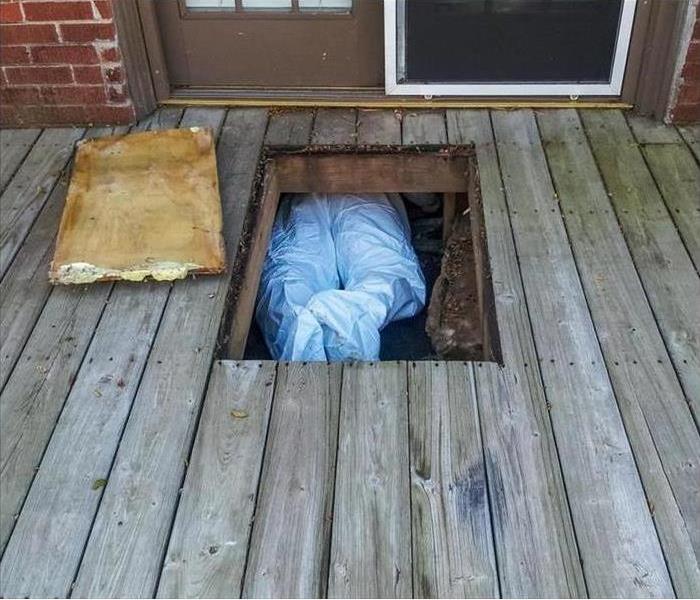 Water in a crawlspace can come from a variety of sources.
Water in a crawlspace can come from a variety of sources.
Three Methods For Fixing a Wet Crawl Space
Water in a crawlspace can come from a variety of sources. Some of these causes are preventable, whereas others call for quick action to eliminate standing water caused by flooding. Here are three methods for fixing a wet crawl space and preventing the issue from recurring.
1. Identify the Source
A crawlspace may flood for a variety of reasons. Conditions brought about by overflowing surface or subterranean water can be difficult to prevent, but should be cleaned up as soon as possible. Grading problems, clogged gutters, and improperly installed downspouts can also lead to crawlspace and foundation issues. A broken water line or sewer backup can also cause water to collect in a crawlspace.
2. Pump Out Water And Dry
Residential water damage restoration services have all of the expertise and equipment needed to quickly restore a wet crawl space. Professionals rely on pumps to get rid of water and blowers and dehumidifiers to speed drying. This equipment can limit the extent of damage and mitigate mold.
3. Fix the Cause
You may be able to prevent water from collecting in a crawlspace by adjusting the grading of your landscaping and carefully monitoring watering in beds near the foundation of your home. Clear your gutters and make sure that downspouts direct water away from the foundation and have a two-foot splash block. Have plumbing regularly inspected to prevent pipe breaks and take measures to prevent bursts due to freezing temperatures by heating your home and allowing a faucet to drip.
Mold may have already started to develop if water has been standing or moisture has lingered in your crawlspace for 24 to 72 hours or longer. Conditions in a wet crawl space are ideal for mold growth. You may want to hire a water damage restoration service with certified mold prevention, testing, and mitigation experts on staff at SERVPRO of Muskogee McIntosh Counties & Tahlequah at 918-913-4490.
Save Money and Natural Resources by Maintaining Irrigation Systems
7/8/2021 (Permalink)
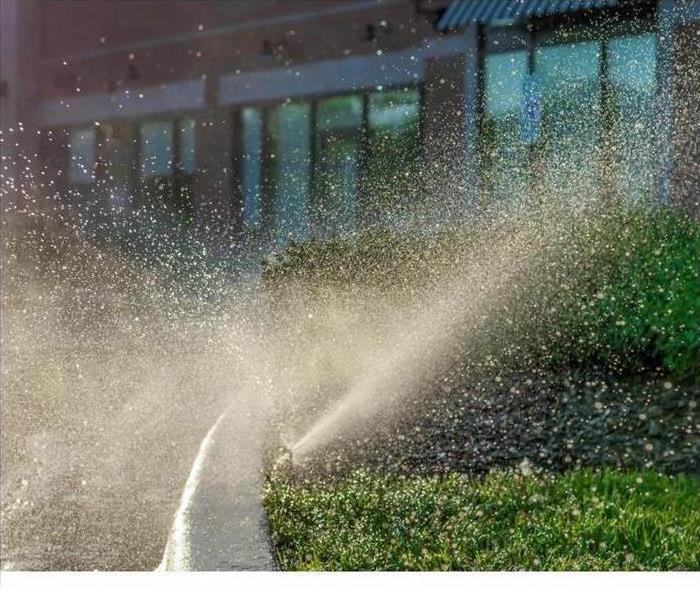 When was your irrigation system installed?
When was your irrigation system installed?
Ways To Save Money And Natural Resources With Regular Irrigation Maintenance
When you decided to put in an irrigation system at your business, you had hoped that it would save you some time on landscaping so that you could focus on other business matters. While an automatic sprinkler system is indeed efficient, it will not remain so without proper and regular maintenance.
1. Adjust to the Seasons
Have you ever driven by someone's home or business and seen the irrigation system running in the middle of a rainstorm? Not only is this inefficient, but it also adds unnecessary cost to your bottom line and could cause flooding. Know the seasons in your area and adjust your irrigation schedule accordingly. Too much water isn't only bad for your landscaping, it can be bad for your business. If too much water collects along with your building, it could lead to flooding, in which case you should call a commercial restoration service for help.
2. Inspect Often
Your sprinkler system is intended to withstand some normal wear and tear but that doesn't make it indestructible. If a nozzle gets bumped out of place by a passing dog or by a landscaper trimming weeds, it might need to be repositioned to do its job correctly. Worst case, the nozzle or the line that connects to the nozzle has been damaged which can lead to sprinkler flooding. If you've adjusted your irrigation schedule for the season but your water usage bill seems high, check your system to see if it has sustained any damage.
3. Update Your System
When was your irrigation system installed? If you aren't sure or if you know that it has been a number of years, you may want to consider an upgrade. Upgrading your system can save you money and resources, as well as prevent flooding from damaged lines. Frequent irrigation maintenance helps you to know when it's time for an update.
Keeping a regular irrigation maintenance schedule will ensure that your system is working for you and not against you.
Common Causes of a Leaking Toilet and Their Fixes
4/14/2021 (Permalink)
Common Causes of Toilet Leaks
A leaking toilet is absolutely no fun. From having to clean up gross toilet water to having to deal with secondary water damage, there are countless reasons you need to suck it up and either invest in professional plumbing services or figure out how to fix the leak yourself. Which you choose to do all depends on the cause of the leak. Below are just four common causes of toilet leaks:
- The wax ring is dry.
- The toilet was improperly installed.
- The tee bolts are loose.
- The flange is broken.
If you don't feel confident in your ability to make an accurate diagnosis and repair the issue yourself, call a plumber. Otherwise, keep reading for repair solutions.
Solutions to a Bathroom Leak
The solution to your leaking toilet all depends on the problem. If the problem stems from a dry-rotted wax-ring, you may have to remove your toilet and exchange the old ring with a new one. This can be kind of a pain to do, as toilets are heavy and what lies beneath them is generally not very pretty. However, if you're strong, and if you can get over the gunk that rests at the base of a toilet, you can save big on making the repair yourself.
If the toilet was improperly installed, you may need to, again, remove the toilet and reinstall it. This is also something you can either do yourself or have a handyman take care of for you.
Loose tee bolts is the best-case scenario. Tightening tee bolts involves nothing more than taking a wrench and twisting the nuts with all your might. Hopefully, tee bolts are your only concern.
If possible, fixing a broken flange is worse than fixing a rotted wax ring. It's also a much more complex process than any of the above fixes, which is why, if the flange is the problem, you should allow your local plumber to do the job for you.
Once the Repair Is Done, It's Time To Cleanup
Once you've fixed the leaking toilet, contact your water damage restoration team to clean up around the leak site and ensure that there is no residual moisture that can cause secondary damage. This final step can save you money and your home.
How to Flush Your Water Heater
2/2/2021 (Permalink)
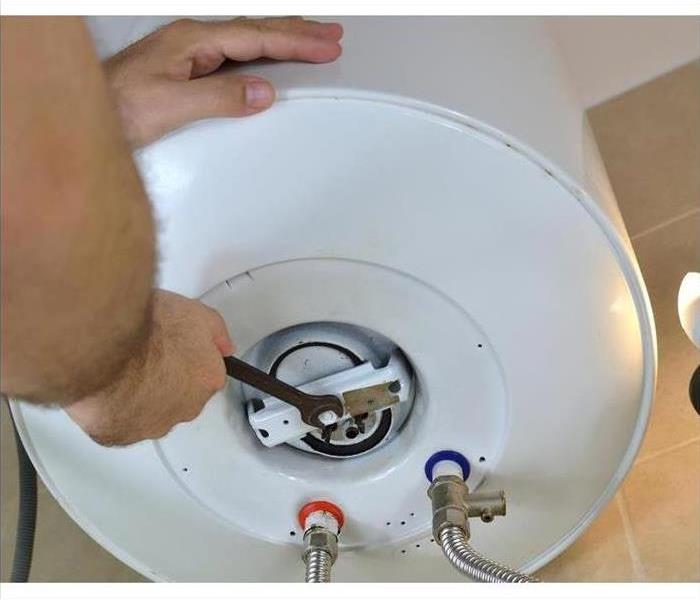 Your water heater flush is now complete
Your water heater flush is now complete
How to Flush Your Water Heater
Much like any other appliance in your home, your water heater requires routine maintenance in order to continue functioning properly. Performing regular maintenance, such as a simple flush, can help keep your appliance running smoothly for years to come. The good news is that this process is quite simple to execute, even if you lack prior plumbing experience.
1. Turn Off the Machine.
This process varies depending on which type of model your home is equipped with. For gas models, simply cut the gas and extinguish the pilot light. Electric models can be switched off via your home's circuit box.
2. Empty and Flush the Tank.
Open your device's drain valve and allow the water to flow freely for several minutes until the tank is completely drained. You can switch on the faucet in your kitchen sink to help the water drain more smoothly and efficiently. Wait a few minutes before turning off the supply valve. Switch the supply valve back on once the water flow ceases entirely. Flush the water heater quickly before cutting the supply once again.
3. Refill the Water Tank.
Once you feel satisfied that all of the water and debris left in the tank has been drained, you may close the valve. Switch the water supply back on and closely watch the flowing faucet in your kitchen sink. The stream will start flowing smoothly again once the water tank is completely full.
4. Reactivate the Power.
After the tank has been refilled, you can switch the power by on. Do so by repeating step one in reverse order. Double-check to make sure the water tank has been filled completely before restoring the power. Doing so with a half-full tank can damage your appliance. Your water heater flush is now complete.
Performing a successful flush on your water heater is a simple way to help maintain a crucial appliance in your home. Make sure to contact water remediation experts for assistance if you encounter any problems during your flush.
What is Water Extraction?
12/10/2020 (Permalink)
WATER EXTRACTION
When your house has suffered from a flood or if your house has water that you can’t figure out where it is coming from, water extraction is a must-have process to prevent secondary and extensive damage. If water is seeping excessively through the tile flooring or carpet, it could be because of leaking pipes, damaged grounds, or flooding. The cracks and gaps in the floor also allow the rainwater to penetrate underneath the flooring. Drainage issues could be one of the reasons, too.
Water extraction should be performed quickly but it should be done professionally and efficiently. Whether you are looking for emergency water extraction to control the leak or to protect the property, it will be an advantage if you know what water extraction is and how important it is to do the necessary action as soon as possible.
WHAT IS WATER EXTRACTION
What is water extraction? Before you agree on the contract, get to know what it is and why it is important. Water extraction is a kind of process recommended for the removal of excess water from the flooring and grounds of the house or property. It is a tough job that has to be left to professionals only because they have the expertise, the necessary tools and water extraction equipment, and the most efficient methods for water extraction.
The purpose of the water extraction process is to reduce the risk of damages to property, to prevent the growth of molds, and to restore the quality condition of the property. The methods used by the experts include stopping the source of excessive flow of water, draining of water, removal of non-visible water, drying of the grounds, dehumidifying the entire area.
Pumps can be used to pump out the water, and drying systems are used to dry the wall, ceiling, and cavities of the building. A high-end vacuum, on the other hand, is used for water extraction from the carpet. If you do not know how to extract water from the carpet, you can rely on the experts and their high technology methods.
Whether excess water is caused by flooding and natural disaster, or it is because of a bursting pipe underneath the ground, immediate action and attention should be given to your property. Water extraction is your most urgent response to this. Contact the experts at SERVPRO and let the professionals do the job.
918-913-4490
Why is there water in my basement?
12/9/2020 (Permalink)
You walk down to the basement and turn on the lights — and you see water coming in. This is a challenge that is most likely to occur during springtime, so don’t be surprised if you have this experience in March, April or May when the weather is rainiest. This can happen in an unfinished basement, but cleanup and the related challenges are even more intensive when you have a wet basement that’s also finished with wet carpet, wood or tile.
When you do have water coming in a basement, it is important first to identify the reason for a wet basement floor — which will help you prevent it from happening again. It is equally as important to know how to clean up water in a basement so there’s no lasting damage.
REASONS YOU SEE WATER IN YOUR BASEMENT
When you have water coming in a basement, there is a long list of places to check for the leak. Here is what you should look for first:
- Window Well: It is always nice to have windows in your basement, so you can enjoy a little bit of natural light. Groundwater and rainwater can accumulate, though, and make it more difficult for the integrity of your window wells to hold up. Examine your window wells for signs of leaks, and also check your gutters and downspouts. Overflowing gutters and downspouts can often lead to leaky window wells as water collects around the foundation of your house.
- Honeycomb: If poorly mixed concrete was used to create your basement walls, honeycomb-like air pockets could form and allow water to leak in. You should be able to see these honeycomb formations, and they are relatively easy to treat as part of your basement waterproofing process.
- Water Pipe Conduits: Water pipes need holes to get into your basement. These holes are typically sealed with a water plug, but those plugs only go so deep — about two inches on average. There may be a gap between the plug and the opening that allows for water to gather and leak into your basement.
- Floor Drains: Water backups related to your own drain system or even the municipal water supply may lead to flooding up through your floor drain. Your basement’s waterproofing system should include a filter that draws this type of water away from your home. If you have one, and you are still experiencing water backups in your basement, it may be time to have the system serviced and checked for problems.
- Wall Leaks: This is a challenge mostly in older homes. Water gathers in low spots after the soil settles over time. This lower settling level allows for water to begin leaking over the top of the wall of your basement. Water may also leak in through cracks in the middle of your walls, which is one of the more severe basement leaks. Middle-of-the-wall leaks appear because of massive pressure buildups in the ground and water pushing against the wall over time.
- Sewer Pipes: Smaller sewer pipe leaks are the most difficult to deal with because they can go undetected for so long. You may first notice a sewer pipe leak of this variety by seeing stains on walls below the drain, ceiling staining or even signs of mold formation.
- Floor Cracks: Basement floor cracks are often the result of a home settling over time. As your home settles, water begins to collect in spaces underground, applying pressure to your basement floor. Water can then leak into your basement through these cracks, or it can even enter as humidity that creates mold and mildew.
- Sump Pumps: Sump pumps can fail for a number of reasons, including but not limited to poor installation, maintenance needs, clogged or frozen discharge lines, power failure, etc. A backup sump pump can help prevent leaking in most cases.
Our Restoration Process!
12/1/2020 (Permalink)
When your home has water damage from flooding or leaks, we have the expertise and equipment to properly restore your property. The water removal and water cleanup process is completed by our highly-trained technicians who will document the drying process. This validates that your property has been dried properly and thoroughly.
Our Restoration Process
Every water damage event is a little different and requires a unique solution, but the general process stays the same. The steps listed below illustrate our process for the “typical” water damage emergency.
- Emergency Contact
When you call us, our consultant will guide you through several questions that will help us respond to your water emergency more quickly and efficiently. This initial contact is an important part of a fast, effective restoration.
- Inspection and Damage Assessment
We determine the scope of your water damage at this stage is crucial to developing a plan of action. We inspect and test the damaged area to determine the extent of damage and how far the moisture has traveled to ensure proper and complete restoration.
- Water Removal / Water Extraction
The water removal process begins almost immediately and removes the majority of the water. We use powerful pumps and vacuum units to quickly remove hundreds or thousands of gallons from your property which helps prevent secondary water damage and mold growth.
- Drying and Dehumidification
We use specialized equipment to remove the remaining water which is harder to access. Our Professionals will use room measurements, temperature, and relative humidity to determine the optimal number of air movers and dehumidifiers needed to dry your home or business.
- Cleaning and Sanitizing
Water damage also affects your belongings, like furniture, clothing, and personal items. We can clean restorable items using a number of specialized cleaning techniques. We also disinfect with antimicrobial treatments and remove odors using industrial air scrubbers and fogging equipment.
- Restoration
The last step is restoring your home or business back to its pre-water damage condition. The restoration step can be relatively minor, such as replacing a few drywall panels or could include major reconstruction, such as rebuilding entire rooms of a home or business.
Why is there water in my basement?
7/23/2020 (Permalink)
You walk down to the basement and turn on the lights — and you see water coming in. This is a challenge that is most likely to occur during springtime, so don’t be surprised if you have this experience in March, April or May when the weather is rainiest. This can happen in an unfinished basement, but cleanup and the related challenges are even more intensive when you have a wet basement that’s also finished with wet carpet, wood or tile.
When you do have water coming in a basement, it is important first to identify the reason for a wet basement floor — which will help you prevent it from happening again. It is equally as important to know how to clean up water in a basement so there’s no lasting damage.
REASONS YOU SEE WATER IN YOUR BASEMENT
When you have water coming in a basement, there is a long list of places to check for the leak. Here is what you should look for first:
- Window Well: It is always nice to have windows in your basement, so you can enjoy a little bit of natural light. Groundwater and rainwater can accumulate, though, and make it more difficult for the integrity of your window wells to hold up. Examine your window wells for signs of leaks, and also check your gutters and downspouts. Overflowing gutters and downspouts can often lead to leaky window wells as water collects around the foundation of your house.
- Honeycomb: If poorly mixed concrete was used to create your basement walls, honeycomb-like air pockets could form and allow water to leak in. You should be able to see these honeycomb formations, and they are relatively easy to treat as part of your basement waterproofing process.
- Water Pipe Conduits: Water pipes need holes to get into your basement. These holes are typically sealed with a water plug, but those plugs only go so deep — about two inches on average. There may be a gap between the plug and the opening that allows for water to gather and leak into your basement.
- Floor Drains: Water backups related to your own drain system or even the municipal water supply may lead to flooding up through your floor drain. Your basement’s waterproofing system should include a filter that draws this type of water away from your home. If you have one, and you are still experiencing water backups in your basement, it may be time to have the system serviced and checked for problems.
- Wall Leaks: This is a challenge mostly in older homes. Water gathers in low spots after the soil settles over time. This lower settling level allows for water to begin leaking over the top of the wall of your basement. Water may also leak in through cracks in the middle of your walls, which is one of the more severe basement leaks. Middle-of-the-wall leaks appear because of massive pressure buildups in the ground and water pushing against the wall over time.
- Sewer Pipes: Smaller sewer pipe leaks are the most difficult to deal with because they can go undetected for so long. You may first notice a sewer pipe leak of this variety by seeing stains on walls below the drain, ceiling staining or even signs of mold formation.
- Floor Cracks: Basement floor cracks are often the result of a home settling over time. As your home settles, water begins to collect in spaces underground, applying pressure to your basement floor. Water can then leak into your basement through these cracks, or it can even enter as humidity that creates mold and mildew.
- Sump Pumps: Sump pumps can fail for a number of reasons, including but not limited to poor installation, maintenance needs, clogged or frozen discharge lines, power failure, etc. A backup sump pump can help prevent leaking in most cases.
WHAT TO EXPECT WHEN YOU CALL A PRO
A professional can arrive at your home, assess the damage and make recommendations about the best course of action. A professional also has the experience and tools needed to navigate the situation safely and ensure you get the quickest, most effective solutions for your unique situation. Not only will SERVPRO of Muskogee/McIntosh Counties & Tahlequah know how to dry a wet basement, but they can also provide solutions that help prevent future issues and long-term damage.
Water Supply Lines: The Unseen Destroyer in your Muskogee Home
3/31/2020 (Permalink)
Most people see that SERVPRO is a flood cleanup and disaster mitigation company and think, "I live in Muskogee, I don't live by an ocean or pond or river so the chance of my house flooding is next to nothing."
What most people don't realize is that most of the water damage caused by flooding calls we receive come from broken or leaking water supply lines. Supply lines are those thin hoses that run to appliances like refrigerators, dish washers, toilets, water heaters, clothes washers, etc. The quality and price of these hoses vary drastically. Most people opt for the least expensive option without knowing that cheap hoses need to be checked and replaced often. Sudden bursts and slow drips both can cause a substantial amount of damage which require flood mitigation and sometimes mold remediation. If you haven't checked you supply lines in a while, or ever, now would be a good time to do so.
When your home has water damage from flooding or leaks, we have the expertise and equipment to properly restore your property. Our experience and scientific approach to water removal and water cleanup enable us to properly dry and restore your property.
If You Have Water or Flood Damage?
Call Us Today- (918) 913-4490
What To Do Until Help Arrives
2/5/2020 (Permalink)
With the lowered temperatures from last week and the resulting frozen and broken water pipes, it seems appropriate to really talk about that to do until professionals can reach you to fix and/or dry your property. SERVPRO® teams are doing their best to get every job done quickly and completely so they can move on to the next site, but there were a great deal of homes and businesses affected by the cold. Because of this, we want to make sure that you know what to do to stop whatever the cause of the damage is and slow the damage process so that when we come in to restore your property, we can move quicker.
There are a few things you need to ask yourself as soon as water damage occurs.
- “Is it safe to stay in the house?”
- “Are there any electrical or ‘slip and fall’ hazards?”
- “Can I perform the tasks at hand safely? Or should the whole process be left to professionals?”
- “Will I be able to move wet objects? Are there objects that are too heavy to move away from the damage?”
Once these questions have been answered, you can proceed to do whatever you can do on your own.
You can remove excess water by mopping and blotting; but remember that the water is likely not just on the floor. Wiping excess water from wood furniture is especially important. Wood is particularly susceptible to water damage. It’s best to remove lamps and other tabletop items and promptly soak up as much water from the wood as is possible. While the damage will be different than that of a wood surface, other furniture materials and household items can be affected by water as well. It is best to prop wet upholstery and cushions and place aluminum foil or wood blocks between furniture legs and wet carpeting. Never leave wet fabrics in place. Hang furs and leather goods out of the way of the moisture. Above all, just remember that removing excess water will prevent it from spreading to other items or other locations.
Never use a household vacuum to suck up water. There are other ways to dry out your floor, carpeting, and walls. If it were summer, turning the air conditioning on would help with drying. In winter however, running the AC is not always an acceptable solution (especially in Illinois right now with temperatures near freezing). Rather than turn down the heat, it’s better to use a dehumidifier to dry the air in the building. The only exception to this option is if there is an electrical issue present with the water damage. In that case, don’t use any electrical devices; televisions, microwaves, etc.
It’s easy to overlook this next task, but it is imperative to remove colored rugs from wet carpeting. The same goes for books, magazines or other colored items. The colors in these items could bleed into carpeting, leaving stains that will require special equipment to remove. Just as well, moving art objects to a safe, dry place can reduce damages to walls, floors, and the art itself.
By gathering loose items and keeping the water damage contained to as small of a place as possible, it is likely that the restoration of the property will be easy and much less expensive.
Winter weather is tough on buildings, and broken pipes can cause some of the worst damage. Just be prepared and hold on to your patience knowing that the teams at SERVPRO® will get to you as soon as they possibly can. We will always do our best to make it “Like it never even happened.” ®
If you experience water damage from broken pipes, roof leaks, or anything else be sure to get a hold of the professionals at SERVPRO® of Muskogee/McIntosh Counties & Tahlequah for your cleaning and restoration needs. 918-913-4490
How Fast Can Water Damage Happen?
12/5/2019 (Permalink)
Water damage is a common problem that can occur in any home or business. Time is never on your side when it comes to water damage, as water spreads quickly through your property, your risk for mold also increases by the minute. Water will absorb into walls, floors, upholstery, and belongings at a rapid pace. Such damage to furniture will cause finishes to bleed onto carpet and leaving the flooring stained. Warping and swelling of books, photographs and other paper goods will occur quickly as well. It is important to be aware of these signs and address them promptly to prevent further damage and potentially hazardous conditions like mold growth.
Within 1hr – 24hrs of Water damage:
A musty odor appears.
Furniture begins to swell and crack.
Dyes and inks from cloth and paper goods spread and stain.
Drywall begins to swell and break down.
Metal surfaces begin to tarnish.
Within 48 hours – 1 week of water damage:
Furniture warps and shows signs of mold.
Paint begins to blister.
Wood flooring swells and warps.
Serious biohazard contamination is possible.
Mold and mildew may grow and spread.
Doors, windows, and studs swell and warp.
Metal begins to rust and corrode.
More Than 1 Week:
Restoration time and cost increase dramatically after more than one week of water damage, replacing contaminated materials and structural rebuilding may be extensive.
Structural safety, mold growth, and biohazard contaminants pose serious risks to occupants of properties that are at risk.
SERVPRO of Muskogee/McIntosh Counties & Tahlequah has trained professionals that use advanced extraction techniques to help clear away water and mitigate loss. The best Inject dry systems, truck-mounted extractors and desiccant humidifiers are used by our certified technicians to ensure your home or business is properly dried and so we can “make it like it never even happened.”
Water Damage Restoration Services
12/5/2019 (Permalink)
The procedure of restoration starts as quickly as you pick up the phone to call us. SERVPRO of Muskogee/McIntosh Counties & Tahleuqah is accessible for your water emergencies 24 hours a day, 7 days a week, whether you have a tiny water loss such as leakage of your washer or a big loss where you come back to several inches of water filling your garage. It is important to take ASAP action whenever you deal with water in your home. The longer the water sits the more damage it causes and the more dangerous it can be.
Water damage
Water damage can be very stressful in your home and cause a lot of chaos. If you call SERVPRO of Muskogee/McIntosh Counties & Tahleuqah, feel comfortable knowing that our technicians have the particular training for water damage and the knowledge required to get you through this stressful moment. The cornerstone of our company is water damage.
What are you going to expect when calling SERVPRO of Muskogee/McIntosh Counties & Tahleuqah? We'll ask you a few questions about your water loss when you call. These issues will assist us to prepare with the necessary services, resources and number of technicians.
Be ready when you call to answer these questions:
- Your name and contact information
- Your insurance information (including agent name) if applicable
- The street address of the damaged home
- When did the flooding/water damage occur?
- What caused the water damaged, (if known)?
- Is there electricity available for our use?
Upon arrival at your home, SERVPRO of Muskogee/McIntosh Counties & Tahleuqah will perform a thorough inspection including a damage evaluation. Our technicians are trying to assess the seriousness of the damage at this point and to create an action plan. We will inspect the source of the moisture and ensure that it is stopped before the restoration and drying process can start. We will then determine the water's level of contamination
- Category 1: “Clean Water”
- Category 2: “Gray Water”
- Category 3: “Black Water”
After this category of the water has been determined SERVPRO of Muskogee/McIntosh Counties & Tahleuqah can them go forward with our plan of action and begin the cleanup process.
Give us a call 918-913-4490
Disaster Response Is Teamwork!
12/4/2019 (Permalink)
There is a cleaning and restoration business located in the Muskogee area. You see their bright green trucks at businesses and residences around town. Their advertisements talk about disaster recovery. They seem to be good at drying buildings and always have the equipment needed. They will show up at commercial and residential locations after:
- Fires
- Floods
- storms
- Mold outbreaks
SERVPRO Has a Secret Weapon
That small company is one of many similar businesses around the country. At last count, there were more than 1,700 of them. Every one of them works locally, just like the one near you. Their corporate office activates the Disaster Recovery Team. The team turns those local experts into a regional task force. The recovery team is the communications center. It coordinates the activities of the task force and temporary labor brought in to assist with the damage.
Not all emergencies require a big response. They also have smaller response teams positioned. Those teams provide the same support as the corporate team, but on a smaller scale. These storm teams also play a role in larger regional disasters. They provide an intermediate level of control and operate as mobile command centers.
You now understand what makes that small cleaning and restoration business so special. They really are disaster recovery specialists. When fire damage, water damage or bad weather affect your home, you now know who to call. Those local cleaning and restoration professionals are ready to handle your problem. When they finish with the damage, your home will feel and look “Like it never even happened."
SERVPRO of Muskogee/McIntosh Counties & Tahlequah
Give us a call 918-913-4490
Water Destroys
11/18/2019 (Permalink)
Water damage describes a large number of possible losses caused by water intruding where it will enable attack of a material or system by destructive processes such as rotting of wood, growth, rusting of steel, de-laminating of materials such as plywood, and many others.
The damage may be imperceptibly slow and minor such as water spots that could eventually mar a surface, or it may be instantaneous and catastrophic such as flooding. However fast it occurs, water damage is a major contributor to loss of property.
An insurance policy may or may not cover the costs associated with water damage and the process of water damage restoration. While a common cause of residential water damage is often the failure of a sump pump, many homeowner's insurance policies do not cover the associated costs without an addendum which adds to the monthly premium of the policy.
Getting Back to Pre-Water Damage Condition
9/16/2019 (Permalink)
Every water damage event is a little different, and requires a unique solution, but the general process stays the same. We carefully inspect your property’s water damage, determining the type of water damage and the areas affected. This is a crucial step to creating an effective plan of action that will result in a successful restoration.
After the bulk of the water has been removed, our technicians use specialized equipment to target the water that’s harder to access. we use less intrusive, scientific drying methods to draw the remaining water and moisture from your property with air movers and dehumidifiers.
Water damage also affects your belongings, like furniture, clothing, and personal items. We can clean restorable items using a number of specialized cleaning techniques. We also sanitize with antimicrobial treatments and remove odors using industrial air scrubbers and fogging equipment.
The last step is restoring your home or business back to its pre-water damage condition. The restoration step can be relatively minor, such as replacing a few drywall panels, or could include major reconstruction, such as rebuilding entire rooms of a home or business.
Water Damage? Give SERVPRO of Muskogee/McIntosh Counties & Tahlequah a call 918-913-4490.
Too Much Water
9/5/2019 (Permalink)
Too Much Water...
Water damage describes a large number of possible losses caused by water intruding where it will enable attack of a material or system by destructive processes such as rotting of wood, growth, rusting of steel, de-laminating of materials such as plywood, and many others.
Water damage is a problem that most property owners dread. When it rains heavily or snow melts quickly, the risk of this type of damage increases. Water can cause thousands of dollars’ worth of damage by damaging wood furniture, upholstery, electronics, household appliances, and plumbing
There are several possible causes of water damage. Leaky dishwashers, clogged toilets, broken pipes, broken dishwasher hoses, overflowing washing machines, leaky roofs, plumbing leaks, and foundation cracks are just some of the possible causes of water damage in homes and businesses. Floods, heavy snow, and heavy rain are other possible causes of this type of damage and can lead to having water in basements. Too much water can lead to minor problems such as water in basement areas, or it can lead to the destruction of homes and businesses. Once a home or business sustains water damage, it is important to start the water damage cleanup immediately.
Water damage also increases the risk of mold growth, which is a very expensive problem to remediate. Hiring a water damage restoration company like SERVPRO of Muskogee/McIntosh Counties & Tahlequah can make the cleanup process easier to handle, we employ experienced workers who know the best ways to repair or replace damaged items and help with water damage cleanup.
Properties Drown By Time
8/29/2019 (Permalink)
Eighty percent of disasters are accompanied by water damage.
When water damage occurs it is only a matter of hours before microbial growth settles to a point of visibility. It is important to mitigate water damage immediately.
Every 24 hours water stands in a given area it can wick up drywall 6 inches and only increases with time. If water has seeped between walls or under a base board it is safe to assume the interior and exterior of the wall, studs and insulation are all affected by this time. It is important to have SERVPRO Muskogee/McIntosh Counties & Tahlequah to come, assess, and advise you if this is a potential claim and what must you do to save your property from dry rot, microbial (molds0, and other costly secondary damage. The consultation is completely free with no obligation. Please call 918-913-4490 and ask for Lin or Duel for your consultation.
Water, Humidity, and Oklahoma
5/29/2019 (Permalink)
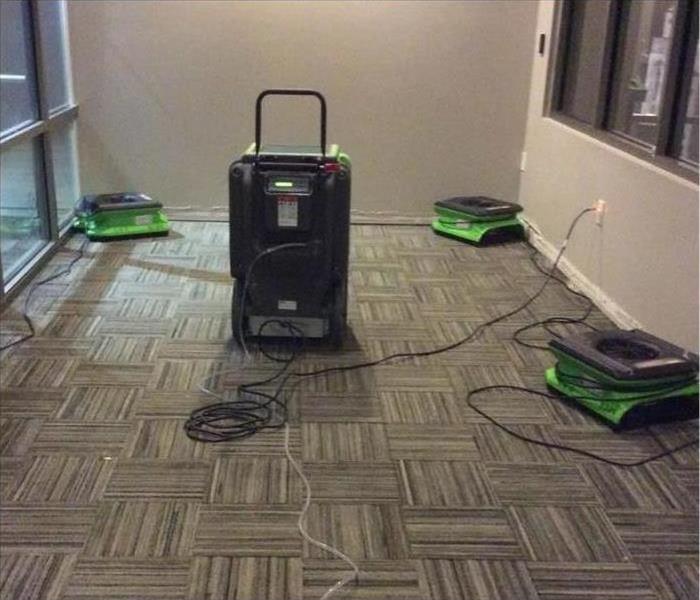 Dehumidifiers and air scrubbers are placed in water affected rooms to purify the air from any airborne microbial.
Dehumidifiers and air scrubbers are placed in water affected rooms to purify the air from any airborne microbial.
Water
As water infrastructure ages in your residence or commercial property, the potential for leaks grows and the need for asset management increases. Planning ahead is key. Good system diagnosis can provide an accurate and cost-effective assessment.
Humidity
Humidity is the amount of water vapor in the air. Water vapor is the gaseous state of water and is invisible. Humidity indicates the likelihood of precipitation, dew, or fog.
Oklahoma
Oklahoma's climate ranges from humid subtropical in the east to semi-arid in the west. When you are dealing with water damage in Oklahoma, immediate action is crucial. SERVPRO professionals respond immediately and use advanced equipment and techniques to remove the water quickly. Any home or business can quickly become infested with mold with the introduction of a water source, like a roof or plumbing leak. Mold can spread throughout a property in as little as 48-72 hours, and can produce allergens and irritants that have the potential to cause other health effects.
Give us a call if you have a water loss or potential mold in your home or business. 918-913-4490
Water Damage By The Inch...DID YOU KNOW?
12/7/2018 (Permalink)
Did you know?
A 1/4 inch supply line from the Ice Maker, with normal household pressure, can pump 1/2 to 1 gallon of water per minute. That's 700-1,400 gallons of water running through the kitchen in a 24 hour time period.
Did you know?
A 3/8 inch supply line to a toilet can pump 2 to 3 gallons of water per minute with normal household pressure. In a 24 hour period, that could be 3,000-4,000 gallons of water flowing through the home. Hopefully not an upstairs toilet!
Did you know?
A 5/8 inch hose from a washing machine can pump 10-12 gallons per minute, or 14,000-17,000 gallons in a 24 hour period. That is the size of a 18'x4' round swimming pool.
MAKE SURE YOU KNOW..
- Where the main shut off is in your home?
- Is the only shut off at the main meter? Do you need to find it?
- Does each appliance have its own shut off?
Find it, make it, let others know where it is in case you are on vacation, or away from home.
But in the unfortunate event that you should have a water leak... GIVE SERVPRO A CALL!
Water Destroys
11/19/2018 (Permalink)
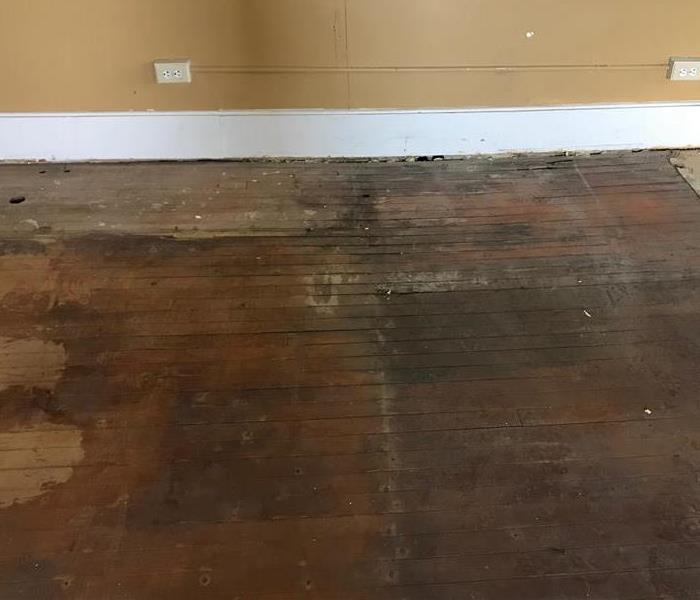 water damage on a hardwood floor.
water damage on a hardwood floor.
Water damage describes a large number of possible losses caused by water intruding where it will enable attack of a material or system by destructive processes such as rotting of wood, growth, rusting of steel, de-laminating of materials such as plywood, and many others.
The damage may be imperceptibly slow and minor such as water spots that could eventually mar a surface, or it may be instantaneous and catastrophic such as flooding. However fast it occurs, water damage is a major contributor to loss of property.
An insurance policy may or may not cover the costs associated with water damage and the process of water damage restoration. While a common cause of residential water damage is often the failure of a sump pump, many homeowner's insurance policies do not cover the associated costs without an addendum which adds to the monthly premium of the policy.
Getting Back to Pre-water Damaged Condition
9/18/2018 (Permalink)
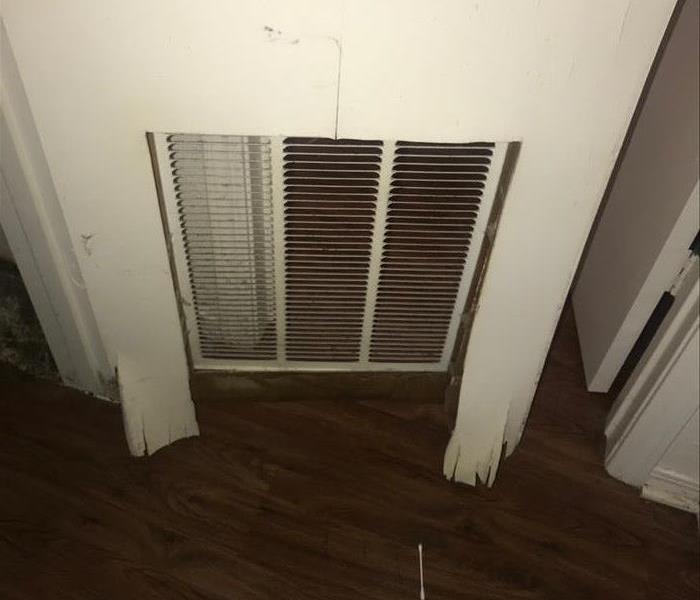 Leaky HVAC destroyed door before leak was found
Leaky HVAC destroyed door before leak was found
Every water damage event is a little different, and requires a unique solution, but the general process stays the same. We carefully inspect your property’s water damage, determining the type of water damage and the areas affected. This is a crucial step to creating an effective plan of action that will result in a successful restoration.
After the bulk of the water has been removed, our technicians use specialized equipment to target the water that’s harder to access. we use less intrusive, scientific drying methods to draw the remaining water and moisture from your property with air movers and dehumidifiers.
Water damage also affects your belongings, like furniture, clothing, and personal items. We can clean restorable items using a number of specialized cleaning techniques. We also sanitize with antimicrobial treatments and remove odors using industrial air scrubbers and fogging equipment.
The last step is restoring your home or business back to its pre-water damage condition. The restoration step can be relatively minor, such as replacing a few drywall panels, or could include major reconstruction, such as rebuilding entire rooms of a home or business.
Too Much Water...
9/18/2018 (Permalink)
Water damage describes a large number of possible losses caused by water intruding where it will enable attack of a material or system by destructive processes such as rotting of wood, growth, rusting of steel, de-laminating of materials such as plywood, and many others.
Water damage is a problem that most property owners dread. When it rains heavily or snow melts quickly, the risk of this type of damage increases. Water can cause thousands of dollars’ worth of damage by damaging wood furniture, upholstery, electronics, household appliances, and plumbing
There are several possible causes of water damage. Leaky dishwashers, clogged toilets, broken pipes, broken dishwasher hoses, overflowing washing machines, leaky roofs, plumbing leaks, and foundation cracks are just some of the possible causes of water damage in homes and businesses. Floods, heavy snow, and heavy rain are other possible causes of this type of damage and can lead to having water in basements. Too much water can lead to minor problems such as water in basement areas, or it can lead to the destruction of homes and businesses. Once a home or business sustains water damage, it is important to start the water damage cleanup immediately.
Water damage also increases the risk of mold growth, which is a very expensive problem to remediate. Hiring a water damage restoration company like SERVPRO Muskogee/McIntosh Counties & Tahlequah can make the cleanup process easier to handle, we employ experienced workers who know the best ways to repair or replace damaged items and help with water damage cleanup.






 24/7 Emergency Service
24/7 Emergency Service

